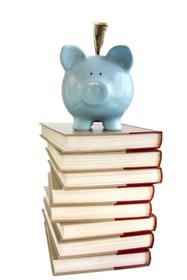Top Rankings
Temple City Unified School District ranks among the top 20% of public school district in California for:
Category
Attribute
Overall Rank
Highest overall rank (Top 10%)
Math Proficiency
Highest math proficiency (Top 5%)
Reading/Language Arts Proficiency
Highest reading/language arts proficiency (Top 10%)
Science Proficiency
Highest science proficiency (Top 10%)
Graduation Rate
Highest graduation rate (Top 5%)
Community Size
Largest student body (number of students) (Top 1%)
For the 2025-26 school year, there are 2 public middle schools serving 867 students in Temple City Unified School District. This district's average middle testing ranking is 10/10, which is in the top 10% of public middle schools in California.
Public Middle Schools in Temple City Unified School District have an average math proficiency score of 65% (versus the California public middle school average of 32%), and reading proficiency score of 68% (versus the 46% statewide average).
Minority enrollment is 94% of the student body (majority Asian), which is more than the California public middle school average of 78% (majority Hispanic).
Overview
This School District
This State (CA)
# Schools
9 Schools
3,496 Schools
# Students
5,222 Students
1,852,978 Students
# Teachers
221 Teachers
87,768 Teachers
Student-Teacher Ratio
24:1
24:1
Student By Grade
District Rank
Temple City Unified School District, which is ranked #115 of all 1,908 school districts in California (based off of combined math and reading proficiency testing data) for the 2022-2023 school year.
The school district's graduation rate of 97% has increased from 96% over five school years.
Overall District Rank
#115 out of 1932 school districts
(Top 10%)
(Top 10%)
Math Test Scores (% Proficient)
66%
34%
Reading/Language Arts Test Scores (% Proficient)
71%
47%
Science Test Scores (% Proficient)
53%
29%
Graduation Rate
97%
87%
Students by Ethnicity:
Diversity Score
0.50
0.64
% American Indian
n/a
1%
% Asian
67%
11%
% Hispanic
23%
55%
% Black
n/a
5%
% White
5%
22%
% Hawaiian
n/a
n/a
% Two or more races
5%
6%
All Ethnic Groups
District Revenue and Spending
The revenue/student of $20,758 is higher than the state median of $19,978. The school district revenue/student has stayed relatively flat over four school years.
The school district's spending/student of $14,199 is less than the state median of $18,399. The school district spending/student has stayed relatively flat over four school years.
Total Revenue
$108 MM
$116,387 MM
Spending
$74 MM
$107,188 MM
Revenue / Student
$20,758
$19,978
Spending / Student
$14,199
$18,399
Best Temple City Unified School District Public Middle Schools (2025-26)
School
(Math and Reading Proficiency)
(Math and Reading Proficiency)
Location
Quick Facts
Rank: #11.
Oak Avenue Intermediate
(Math: 65% | Reading: 68%)
Rank:
Rank:
9/
Top 20%10
6623 Oak Ave.
Temple City, CA 91780
(626) 548-5060
Temple City, CA 91780
(626) 548-5060
Gr: 7-8 | 840 students Student-teacher ratio: 23:1 Minority enrollment: 94%
Rank: #22.
Temple City Alternative
Alternative School
(Math: 50-59% | Reading: 70%)
Rank:
Rank:
9/
Top 20%10
9501 Lemon Ave.
Temple City, CA 91780
(626) 548-5243
Temple City, CA 91780
(626) 548-5243
Gr: K-12 | 27 students Student-teacher ratio: 14:1 Minority enrollment: 89%
Recent Articles

How Public Schools Support Students on Free / Reduced-Lunch Programs
Explore how U.S. public schools support students eligible for free or reduced-price lunch through nutrition, academic, and wraparound services in 2025.

Hidden Costs of Public Schools: Fees, Supplies & Extras
Explore the hidden costs in public schools—fees, supplies, extracurriculars—and how parents can plan for them in 2025.

Public School Funding 2025: What Families Should Know
Essential insights on public school funding in 2025—how it works, what’s changing, and what families should know to stay ahead.





